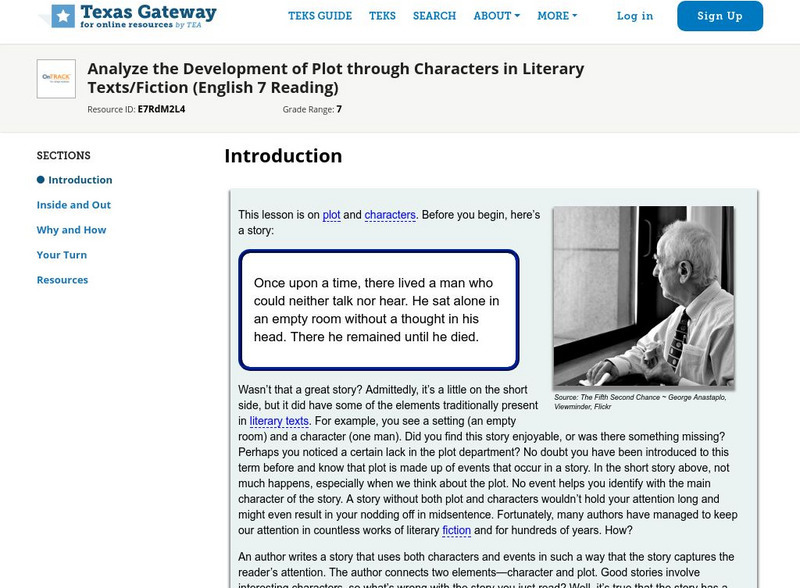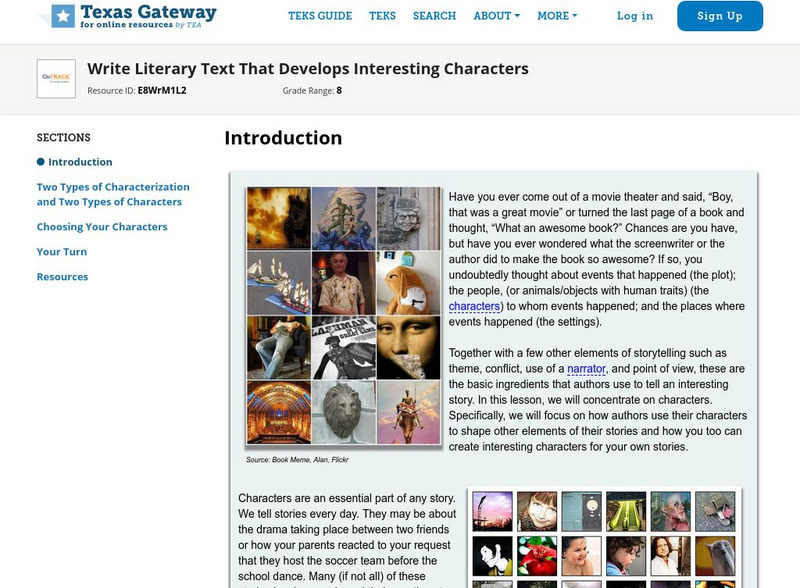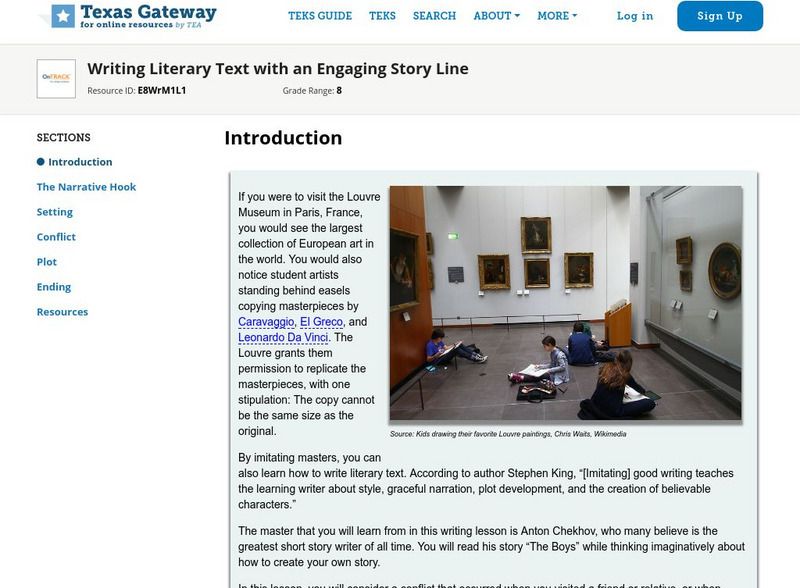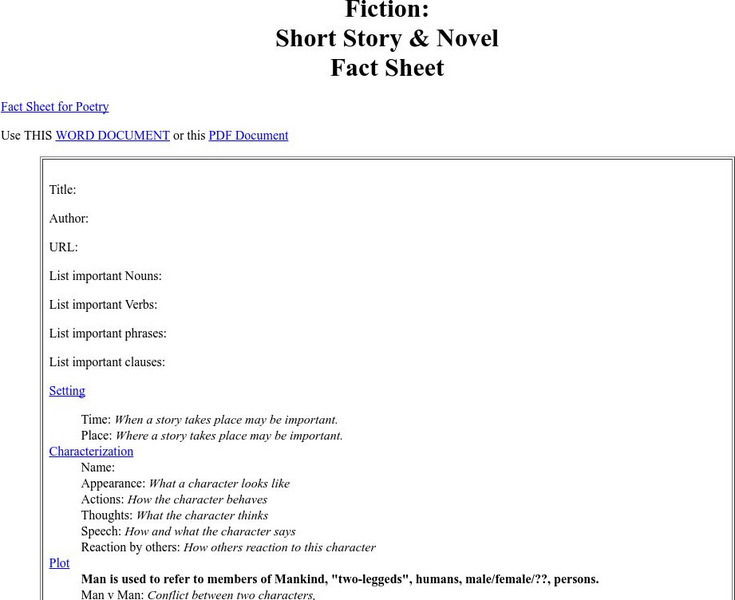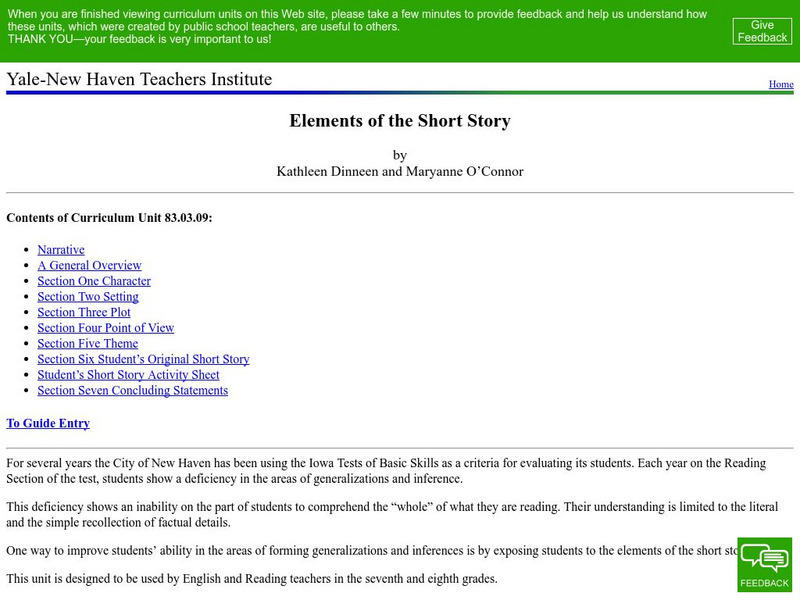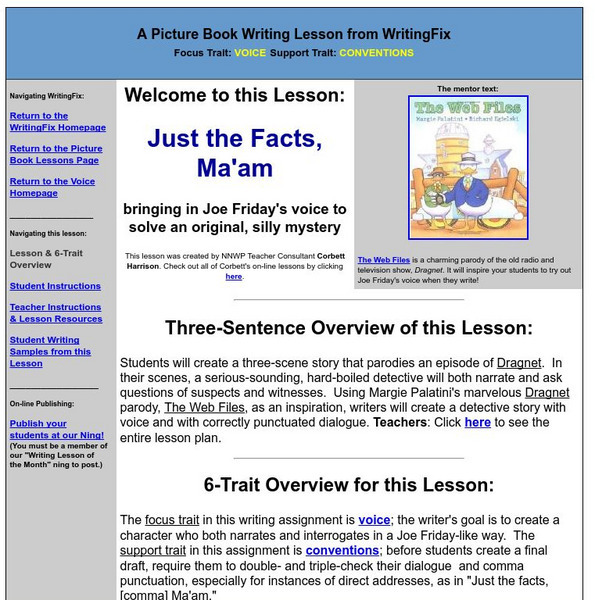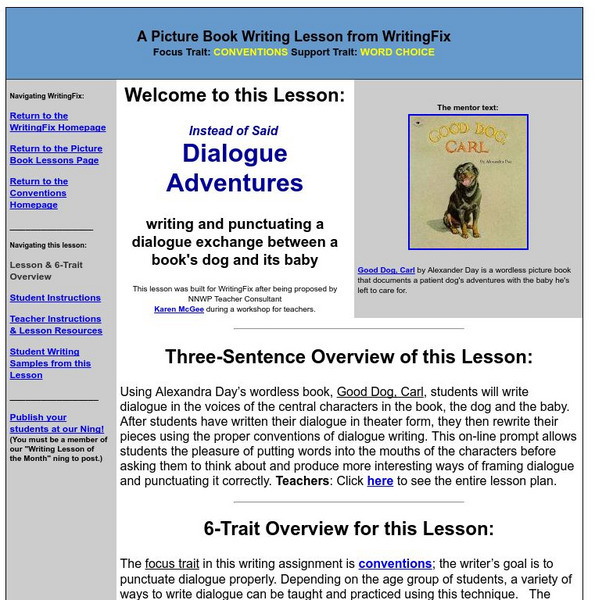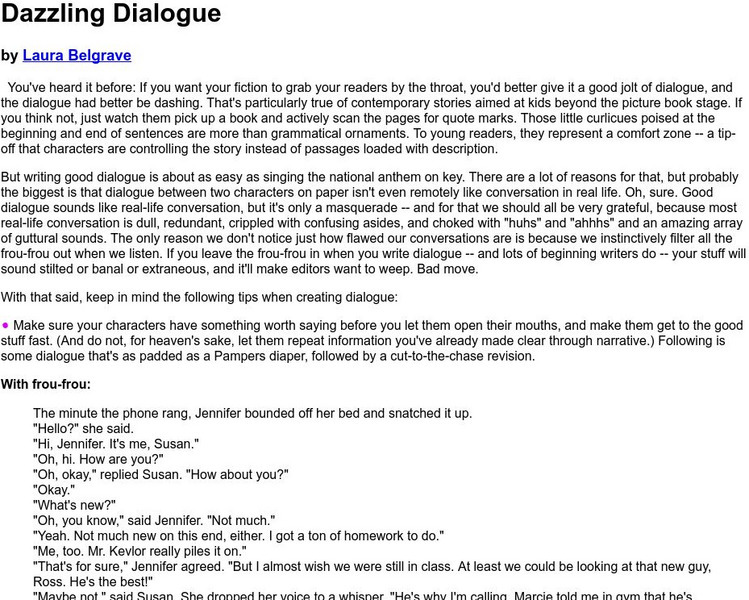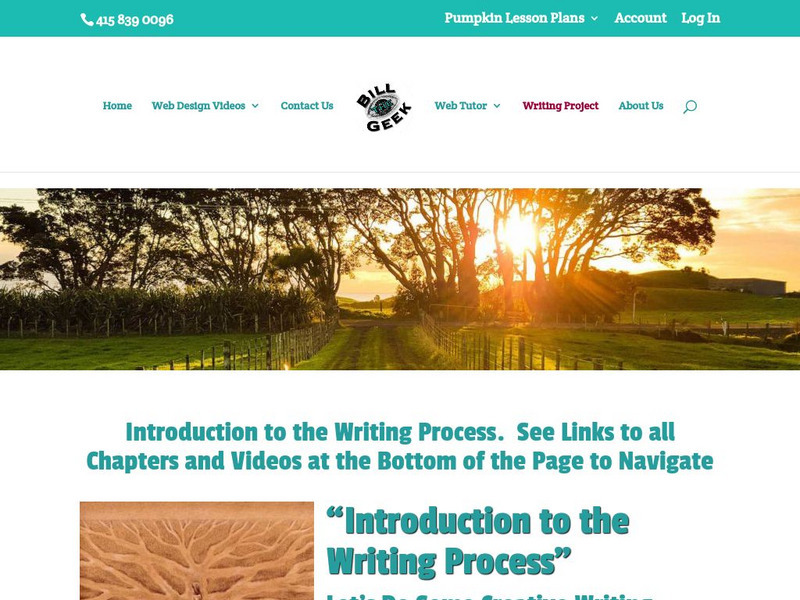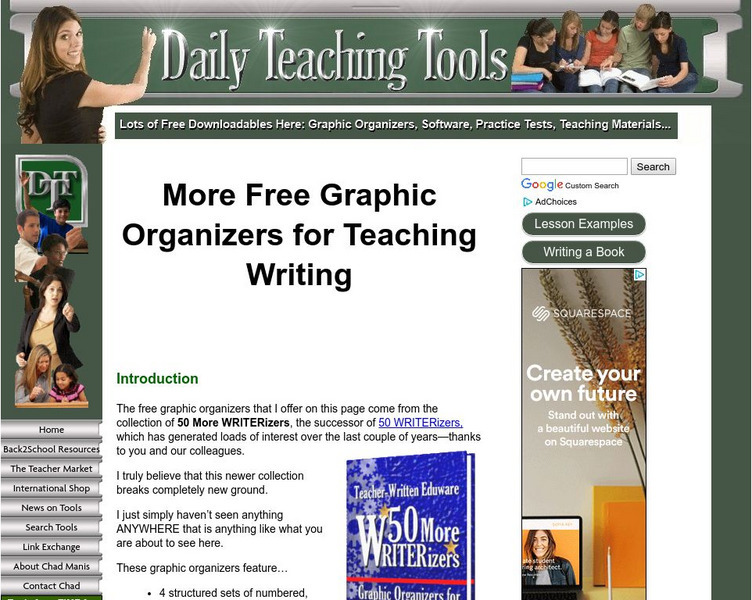Hi, what do you want to do?
Texas Education Agency
Texas Gateway:analyze the Development of Plot Through Characters
This learning module will take the user through examples and applications of how to indentify plot through characters in fictional texts.
Other
Storyboard That
Create your own storyboard with this interactive tool. The storyboard framework is a graphic organizer that helps structure students work into a linear and concise story. Although it feels easy at first, breaking down ones thoughts into...
Texas Education Agency
Texas Gateway: Development of Characters Through Literary Devices
In this lesson, students learn how writers develop characters through a variety of techniques: narration, dialogue, interaction with other characters, interaction with setting, and characters' thoughts. RL.9-10.3 Analyzing Characters,...
Texas Education Agency
Texas Gateway: Analyze Linear Plot Developments in Literary Texts/fiction
[Accessible by TX Educators. Free Registration/Login Required] This lesson focuses on how conflicts determine the resolution of the story. In this lesson, students learn how to recognize conflict, analyze linear plot, and determine how...
Texas Education Agency
Texas Gateway: Analyze the Central Characters in Literary Text/fiction
In this lesson, students will learn some ways that writers reveal the complexity of their characters. By closely analyzing one author's characters, they will come to see how their words, actions, and interactions with one another can...
Department of Defense
Do Dea: Story, Identity, Unity
Delve into the art of storytelling in this self-guided unit. Multiple topics are covered such as literary genres, the 7 elements of fiction, figurative language, theme, characterization, etc. At the end of the unit, write your own flash...
Texas Education Agency
Texas Gateway: Literary Nonfiction
[Accessible by TX Educators. Free Registration/Login Required] In this lesson, you will learn how to analyze literary nonfiction, especially speeches, by making inferences and drawing conclusions based on evidence in the text. The...
Thinkport Education
Thinkport: Read Like This: A Strategy for Analyzing Literary Nonfiction
Read, analyze and answer text-dependent questions about several excerpts from a famous slave narrative called The Interesting Narrative of the Life of Olaudah Equiano.
Texas Education Agency
Texas Gateway: Write Literary Text That Develops Interesting Characters
A learning module that teaches students how to write an literary text with good characterization in four lessons: Introduction, Two Types of Characterization and Two Types of Characters, Choosing Your Characters, and Your Turn.
Texas Education Agency
Texas Gateway: Writing Literary Text With an Engaging Story Line
A learning module that teaches students how to write an engaging literary text in six lessons: Introduction, The Narrative Hook, Setting, Conflict, Plot, and Ending.
Texas Education Agency
Texas Gateway:writing an Engaging Story With Literary Strategies to Enhance Plot
A learning module that teaches students about writing a short story with a strong plot in seven mini-lessons: Introduction, Choose the Point of View, Figure Out What to Say, Suspend Readers in Midair, Write about a Central Theme, Read A...
Texas Education Agency
Texas Gateway: Writing a Short Story With Interesting and Believable Characters
A learning module that teaches students about writing a short story with believable characters in six mini-lessons: Introduction, Imagine 3-D Characters, Show and Tell, Build Your Main Character Read about a Main Character, and Draft...
Ted Nellen
Cyber English (By Ted Nellen): Fiction: Short Story & Novel Fact Sheet
This is a short story or novel fact sheet offered as a Word document or a PDF. It includes places for title; author; URL; list of important nouns, verbs, phrases, and clauses; setting (includes definition); characterization (including...
Online Writing Lab at Purdue University
Purdue University Owl: Fiction Writing Basics
This resource discusses some terms and techniques that are useful to the beginning and intermediate fiction writer, and to instructors who are teaching fiction at these levels. W.11-12.3a Narratives
Yale University
Yale University: Elements of the Short Story
This unit from the Yale University on elements of the short story is designed to develop student comprehension skills, particularly making inferences and generalizing. It also involves students in reading a number of short stories to...
Writing Fix
Writing Fix: Creating a Second Person Choice Story
This lesson is designed to help students understand plot dimensions and literary devices while writing a multi-faceted short story that has many possible outcomes. For inspiration, students will analyze songs that tell stories for both...
Writing Fix
Writing Fix: Just the Facts, Ma'am
Young scholars read The Web Files by Margie Palatini and use the format to write three-scene detective stories of their own. Teacher instructions, student instructions, and student writing samples are provided, as well as an interactive...
Writing Fix
Writing Fix: Dialogue Adventures
In this lesson students will learn how to write dialogue in a particular voice.
Harold D. Underdown
The Purple Crayon: Writing Dazzling Dialogue
This site takes you through the process of writing dialogue in fiction, demonstrating when to omit, replace, or modify your original writing. Includes several examples and gives excellent advice for young writers. W.9-10.3b Narrative...
Other
Writing Is Exciting!
Students and teachers can use this site to find detailed information on effective and creative story writing.
BBC
Bbc Bitesize: Higher English
This site provides information about characters, plot, and setting of several different pieces of literature. It offers links to activities and tests on topic such as analysis and evaluation, creation and production, drama, novels, and...
University of Victoria (Canada)
The U Vic Writer's Guide: Literary Term: Plot
This page offers a detailed overview of plot, including its various aspects and use in various types of literary works.
Daily Teaching Tools
Daily Teaching Tools: Project Narration
This Daily Teaching Tools resource provides graphic organizers for narrative writing. Students will be able to prewrite and draft their narrative writings more efficiently by using these tools.
Writing Fix
Writing Fix: Counting Up or Down Stories
The writer will brainstorm situations where individuals or people in a group count up or count down out loud together. Using the ending of chapter 5 of Wringer by Jerry Spinelli as a model, the writer will plan a story where someone (or...





